Unlike what is popularly depicted in movies about surviving on a deserted island or in any other remote climate, Tom Hanks’ Cast Away springs to mind, you cannot count on the things you need washing up on the beach or being present in the form of trash, ruins or anything else.
Maybe not even a companion volleyball, a Wilson to call your own…
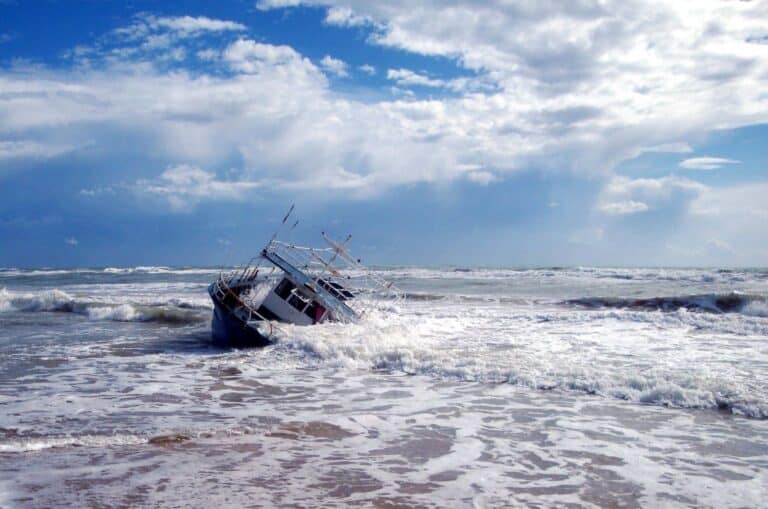
Preparation, like all other survival situations, might spell the difference between life and death.
If you’re traveling for pleasure, work or you have a job that sees you taking to the air or sea on a regular basis. it’s in your best interest to keep a special equipped survival kit on or immediately about your person just in case you do survive a mishap and wind up stranded on a deserted island.
In this article you are going to learn how to survive physically and psychologically should be stranded for years to come.
Table of Contents
10 First Things To Do on a Deserted Island
As with any survival situation, the first things you should do is assess yourself and the other nearby survivors, and start focusing on the basic survival priorities such as shelter and water. Here’s a quick checklist to have in mind:
- remain calm and keep your emotions in check.
- Assess yourself. Are you injured? can you move? Do any of your body parts hurt?
- Look around you for other survivors you can assist. Form a search and rescue party to find and help everyone else.
- Assess your surroundings. Are there any ships nearby that could spot you? What about airplanes?
- Focus on making shelter for the night, to keep everybody warm.
- Take defensive measures against wild animals
- Start scavenging for things from the wreck. Things like medical supplies, rope, food, water, clothes, knives.
- Start looking for a fresh water source.
- Start a fire near your shelter.
- Signal your position. Make a giant SOS signal on the beach from rocks and other heavy objects.
Building Shelter On a Deserted Island
Having shelter is perhaps the most important thing. Exposure and bad weather are both sure killers.
You will need to choose the right spot to build it. It will need to be the driest place you can find, as wetness will suck out the heat from your body very quickly. If it is not very cold, you can build your shelter on the high ground.
The breeze will help keep bugs away and you will be able to see the sea line easier in case there are rescuers nearby.
If there is a cold wind blowing, you will need to choose a place that is sheltered by the trees. Do not build in a valley or a ravine, as the cold air will settle there, and if it rains, there is a higher risk of floods. Here is a list of places to avoid making your shelter:
- Damp Ground
- Mountaintops
- Open Ridges
- Bottom of Valleys
- Ravines
- Washes
Fallen Tree Lean-To Shelter
This is one of the easiest shelters to make. Firstly, you will find a tree that has been broken over. Then, you can lean some branches against it in order to create walls.
Make sure that these branches are stacked thick enough to keep the wind out. You can also build a small fire on the open part of the shelter to have the heat keep you warm.
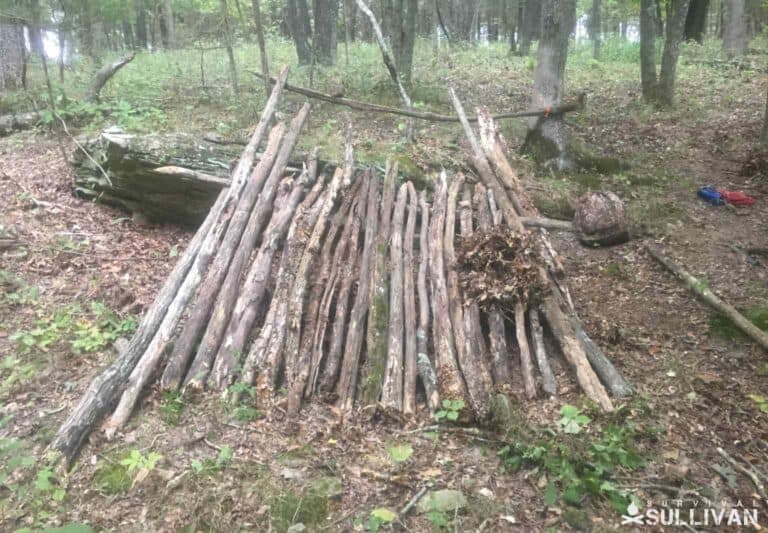
you can find dozens of types of shelters here.
Making Fire
It is critical that you know how to build a fire, and that you have the means to quickly start it. You will be building a fire using friction. If you haven’t built a fire before, it can be quite difficult.
So, it is a good idea to practice this method before an emergency does strike. Here are the steps that you need to follow for the hand drill method.
Finding Water
You will need to see if there is a source of fresh water, potentially spending hours finding it. If you find that there are no fresh water sources, you will need to know how to filter your water. We are going to go over how to filter seawater to make it drinkable.
The materials listed here may be different to what you have available; however, as long as you can find something close to that material you will be able to do the filtration process.
If you find that you are stranded on an island, then you will need to remember how to distil your own water if you cannot find fresh water to drink. When it comes to seawater, you will need to remove the salt so that it is safe for consumption.
A great place to find water is to venture inland. The further you go on the island, the better of a chance you have at finding fresh a water source like a waterfall. If this island is big enough, there is most likely multiple places to find safe and drinkable water.
Evaporation
One of the simplest ways of turning seawater into safe drinking water is evaporation. You use heat to evaporate the water, condense it and collect it into another container. As it happens, it will leave the salt behind and the steam will then collect in one spot in the distillation you build.
Solar Distillation
It’s more than likely that you won’t have the materials that are necessary for methods one and two; however, if you are lucky enough to have them, then you can use those methods to get water faster. If you do not have those materials, then you can use the solar distilling method.
Rain Water
Essentially, rainwater is seawater that has gone through the same process of your filtration system. Find containers, or large leaves that are in good condition, so that you can sit them out to collect the rain drops.
Building Fire
There are different ways of laying the wood to build a good fire. Each of the ways has advantages. The placement of the wood will depend on the situation you are in at the time.
Teepee
To lay this type of fire, you will push a stick that is green inside of the ground at an angle of 30 degrees. To make it stand, you will point the stick in the direction that the wind is blowing.
Put some tinder deeper under the stick and lean some pieces of the kindling onto the stick. When you light the tinder, the kindling will catch on fire. Continue to add more kindling and build the teepee.
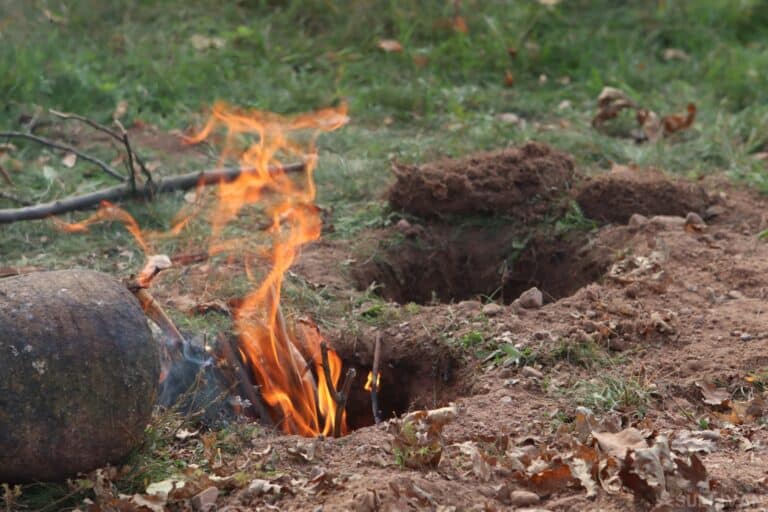
Cross-Ditch
To use this method, you will dig a shallow trench in the shape of a cross about thirty centimeters into the ground. After that, you will dig a cross that is seven centimeters deep.
Once you have the trench dug, you will then put a big wad of tinder in the center of the cross until you have built a kindling pyramid on the tinder. The ditch will allow the air to sweep in and proved an updraft. After everything is ready, place the wood on the top to complete the cross ditch.
Pyramid
For this one you will need to place two small branches or logs parallel to the ground. On top of the parallel wood, you need to place a solid layer of logs. Continue adding three to four more layers with each layer getting smaller and smaller.
Finding Food on a Deserted Island
Islands are typically not complete desert. They offer many things to eat from inland and from the water that surrounds it. The plants on the seashore are different due to the local climate.
In the surrounding water, you can find different varieties of foods like fish, seaweed, crabs, and more. These foods are very important for the nutrition that you need in order to go on and make your temporary home on the island.
Seaweed
Seaweed is typically found where the rocks and the water meet. It can be dried up by the sun and stored for many months. It’s good to have some as a backup food for when you are unable to hunt or gather due to weather conditions.
Bivalves and Mollusks
These include clams, oysters, mussels, and scallops. They should be tightly closed when they are trapped. When you hunt fish, and other sea life, it is good to do it when it is low tide. You can inspect small pools in the rocks for creatures to make it easier to capture these food sources.
Keep in mind that you should only eat the creatures that are alive. Do not eat anything that has already died, as it will make you sick. Make sure to note that if the mollusk is tinted yellow or green, they should not be eaten, as they are toxic.
Sea Snakes and Fish
It can be difficult to catch fish. It can be dangerous, as all sea snakes have venom. To distinguish sea snakes from eels, you should look at the scales and the broadly flattened tails. If you are on the coast, the best time to fish on the shore is two hours once the high tides are gone.
If you try to fish while the tides are coming in, then you are going to be running in and out into the water. It will be a waste of energy and time.
It is also helpful to note that seawater also rots the shoes and clothes that you have been lucky enough to keep. If you were alone on the island, then it would be best to go into the water without any clothes to keep them dry.
When you are fishing in the sea, you will need a larger hook than you would if you were fishing in fresh water. You will have to make one if you are not lucky enough to have one on hand. Spear-fishing is also an option, one you are wise to practice now while you can.
In terms of bait, you can use conch, snails, limpets, and worms. You will dig these bait options up from the sand during the low tide.
You can build a fish trap to the point of an arrow using rocks and stakes and position it away from the shore. The fish will be trapped once the tide recedes. If you use this method, you will have food and save precious calories that the body needs.
Echinoderms
Echinoderms are another great source of food. This includes starfish, sea cucumbers, and even sea urchins. The sea cucumbers laze about on the floor of the sea or they burrow inside of the sand.
The black colored cucumbers are up to eight inches in length and offer great nutrition. They can be roasted on the fire or boiled for around five minutes. They can be chewy and tough once they are cooked.
Edible Bugs
Although most people do not want to eat bugs, you may find the day that you will need to eat them in order to stay alive. There will be edible bugs on the island that you are able to consume to preserve your life. You are able to cook them in order to make them more desirable.
- Grasshoppers and Crickets: These bugs have amazing calcium content, as well as having a lot of protein. The grasshoppers and the crickets have a very high nutritional value. You will need to pull off the legs and their wings. You are able to eat them raw, or you can cook them.
- Ants: You are able to eat ants. They are better when they are boiled. This is due to the taste of vinegar that they have when eaten raw. You will need to avoid the fire ants. They are red in color.
- June Bugs: The smaller June bugs are better tasting than the larger ones. They can be eaten raw or cooked on the fire. They are very easy to catch since they move very slowly. You will find them on plants during the evening.
- Caterpillars: The larvae of butterflies and moths are extremely nutritious. They have a high content of protein, as well as vitamin B. These insects also have iron. You will need to avoid those that are bright in color; they are toxic.
- Centipedes: This is one of the grossest of insects that is in this list; however, they are nutritious. They are found under the logs and large sized rocks. You will need to take off the pinchers and their heads before you consume them. Do not confuse these will millipedes which are poisonous
Note: You will need to avoid bright colored bugs like yellow, red, and hues of orange. The green, black, and brown bugs are good to eat. Avoid the insects with odors that are strong.
Hunting Wild Animals
Hunting is a very active type of gathering food. It will require your participation from the very beginning up until the finish; finish being preparing your meal.
When it is time to hunt you will be committed to it and you will not have the time to build your refuge. It is best to collect fast food, build your shelter, your fire, and then hunt. This will increase your stress since you have no option of failure.
No matter what you are hunting, you should become familiar with various primitive weapons that can be crafted to increase your chances of success.
A few tips you should remember:
- Walk very slowly. You will need to take a small step at a time. You will need to relax. Avoid any sudden, fast movements.
- You need to pause your pace often and keep a keen ear our a few minutes before you move again.
- Look for tracks in the muddy areas like creek banks.
- Look for prints around the base of any nut trees for signs of small animals.
- Stay right inside the line of the trees. Look into the grassy areas for any small creatures.
- Listen for any sounds of wings of birds.
- You will need to scan the landscape from the top of the trees to get a better view.
- You will need to have persistence and extremely patient.
Trapping Small Creatures
Trapping small game is a type of passive method. Once you build the traps you will allow it to sit there until your meal has been captured. This means that you will have that time free to set up other parts of your survival area. It is also deemed a numbers game.
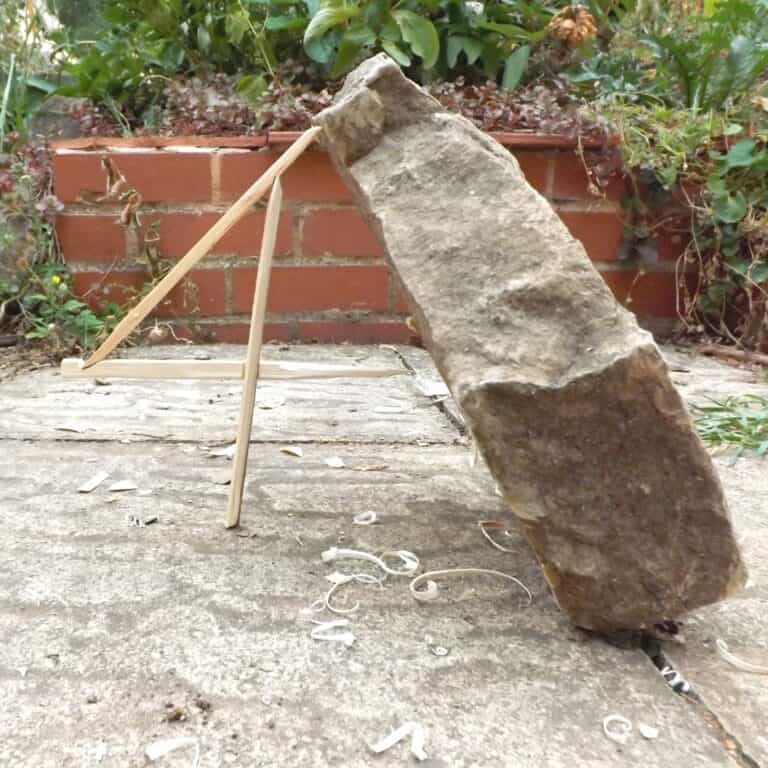
It also means that the more traps you set, the more likely you are to have more food.
If you would like to learn about snare traps, then read this article.
Plants and Berries
Of course if you are stranded on a deserted island, there will be plants and berries that you are able to eat.
To keep yourself safe from toxic plants and berries, here are the guidelines to follow when looking for your dinner. Avoid any plants that have any of these traits:
- Discolored or Milky Sap
- Fine Hairs
- Spines
- Thorns
- Bulbs, Beans, or Seeds that are in the pods.
- Soapy or Bitter Taste
- Carrot, Dill, Parsley, or Parsnip looking foliage.
- Almond scented woody leaves or parts.
- Grain heads that have purplish, pink, or black spurs.
- Any three leaved patterns.
Here is a list of wild plants that are edible…
Making Tools
No matter what you are left with in the wreckage, you are more than likely going to need to create your own tools. In this section you are going to learn to make a few important tools that you will need in order to survive on the island.
Rock Knife
If you do not have a knife, then you will need to make a crude one from a rock. To do this, you will need to bust some rocks together to create a sharpened piece to use as a knife.
When you do this, it’s recommended that you make multiple rock knives. You will use these on the ends of spears and for tools to build the shelter.
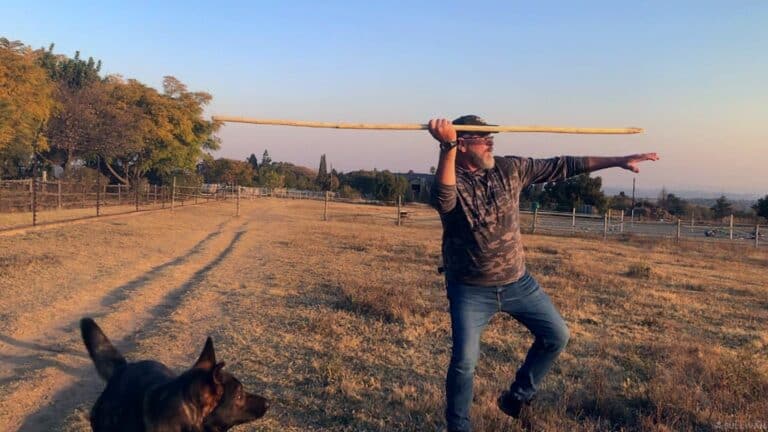
Spear
You will use your rock knife to sharpen and end of a strong stick. To make an even deadlier spear, you can even take the rope to fashion a rock knife to the end of a long, strong stick. If you can find some vines, you can use those as a rope to tie rock knives to the ends of the sticks as well.
If you are using a sharpened point on the stick, you will need to fire bake the end of the spear. Once you have gotten the spear shaped appropriately, you will hold the point over the flames until the wood turns another color.
This will lighten and harder the wood. It will remove all the moisture, as damp wood is soft and not ideal for use as a tool.
Rock Hammer
This one is dead-simple. You will just need a large and heavy rock to use for pounding food and building a shelter.
Psychological Issues
One of the biggest issues will be the psychological issue that comes along with being deserted and alone. The most important thing to do is to remain calm. If you begin to panic, you will lose control and lower your chances of survival.
It is said that due to the nature of humans being social, you should make a “friend” from an inanimate object or what is available nearby. Have conversations with it to help keep the loneliness at bay as much as possible.
You Must Keep Your Mind Right
One of the single hardest things to deal with concerning survival on a deserted island is isolation, and isolation of a kind and in a way that is rarely encountered elsewhere on the planet.
Depending on the exact circumstances of the event, you might not even be able to count on even rare traffic coming anywhere near you that could possibly serve as rescue.
This, more than most other situations, can completely capsize the unfortified mind and lead to profound despair.
Worse, even if you are fortunate enough to be relatively well equipped on an island that can offer you more or less everything you need to survive for some time, there’s another thing that will keep you up at night…
The thought that you are well and truly trapped for the most part with the notion that friends and family are going to go on with their lives and forget about you after they grieve for you is another mental and emotional threat that can lead to total despair.
Should you be rescued, the anxiety of suddenly coming back to life for all the people that you knew and knew you can be a paralyzing affair.
There is no great advice I can give you for dealing with this sort of situation except to tell you to empty your mind of all other concerns, focus on a positive outcome and concentrate your efforts only on day to day living: you must survive to begin to deal with all of your other worries!
Prep Your Survival Kit Before the Trip
What will really make all the difference, if you are fortunate enough to have one, is a specially packed survival kit. There are all kinds of things you will want to have in your survival kit, but some of the most important are listed below:
Fire Starting Kit
The utility of a good fire starting kit should be obvious. one thing the movie Castaway got very, very right in its depiction is the sheer difficulty of getting a friction fire going even under the most ideal conditions. It is a far better thing to be able to click a lighter or give a ferro rod one or two quick strokes instead.
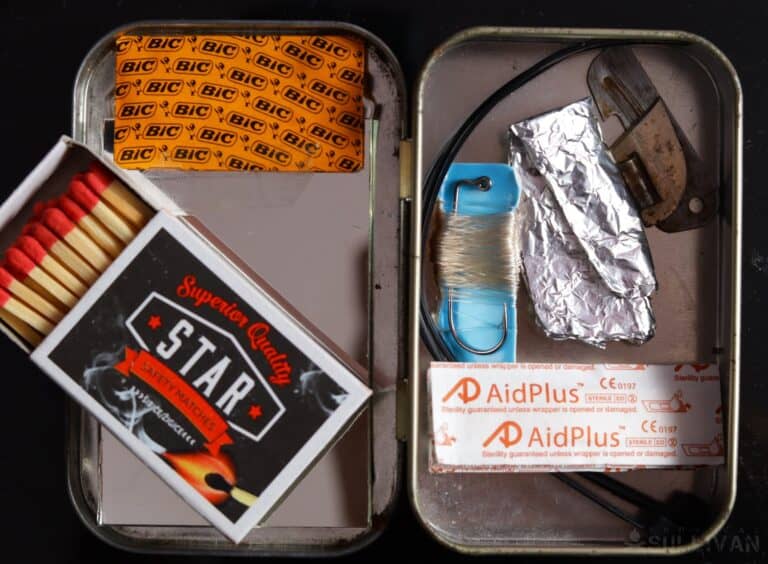
You should have no less than two and preferably three methods for starting a fire in your survival kit, along with a quantity of tinder. Consider too that the flames and smoke from fire is the very best and most visible distress signal you could possibly use to alert rescuers.
Signal Mirror
A signal mirror can function as a backup method for fire starting, but its best attribute is going to be for getting the attention of passing ships or aircraft. This is something that you should practice with, because they do take a certain amount of skill to use effectively.
Cordage
Cordage is another universally useful inclusion for any survival kit, and in particular one where you might be surviving on a deserted island. Cordage can be used to repair other gear, construct a shelter, make tools or even fashion a makeshift raft if you’re going to make a go of it on the open ocean as a last resort.
Space and weight are always a consideration, but more than most scenarios, having an abundance of cordage could be especially important on a deserted island where even raw materials in the form of trash or plants might be in short supply.
Lightweight Hammock
A lightweight hammock is a more specialized but no less valuable inclusion in the survival kit that is tailored for deserted island survival.
This can get you up off of the ground, sand or surf, helping to keep you warm at night when temperatures typically drop. If the ground is wet from the tide or from rain then so much the better.
It’s going to help keep you out of reach of some ground-dwelling biting insects and let you rest more comfortably in all other situations.
Even if, whatever the case, there is no way for you to hang your hammock it can be used for other purposes such as a flag signal (if brightly colored), shade or windbreak, among many other things.
Mosquito Netting
Pretty much any island you might wind up at stands a better than average chance of being absolutely infested with mosquitoes, sand fleas and other biting insects.
These critters can make life hell for you, and if you’re stranded on a tropical island you run a high risk of contracting malaria or some other hideous parasite-borne disease.
To reduce these chances, improve morale and hopefully stay healthy, mosquito netting is a must. This stuff is extremely light and fine, and can pack down very small in almost any kit.
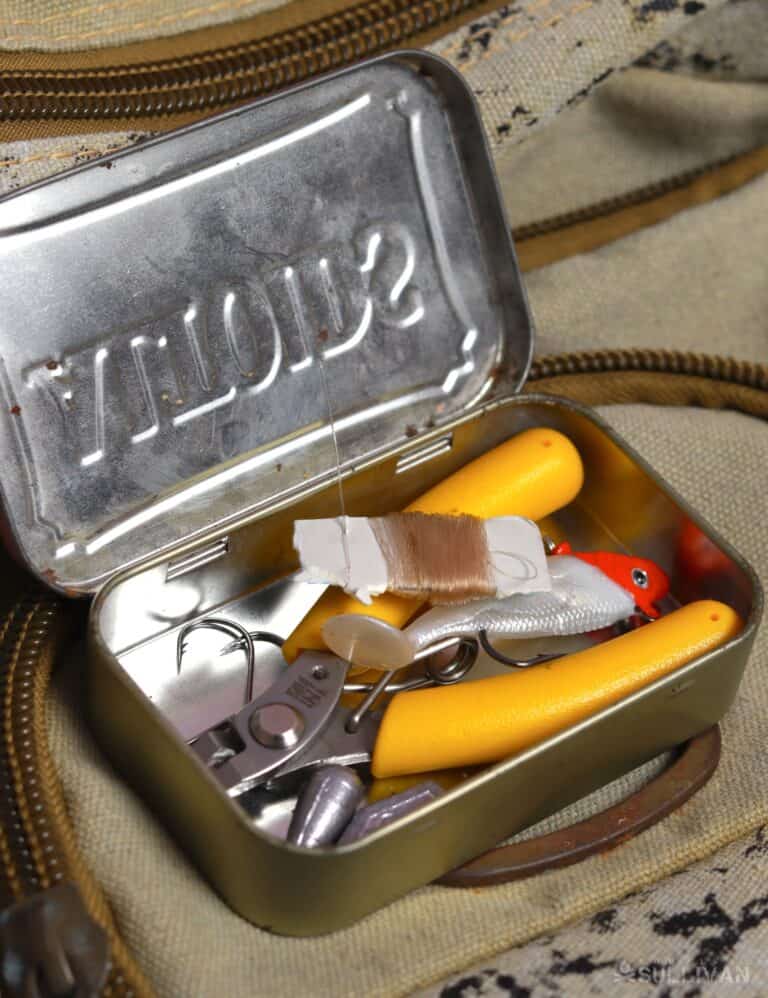
Fishing Kit
If you were on an island that means you’re surrounded by water, have you are surrounded by water that means there will be fish around of one kind or another.
These could prove to be your most available and consistent source of food, especially protein, so make sure your survival kit has a fishing kit component inside with line, lures, sinkers, bobbers and the like.
I know the odds of any one of us ending up on a deserted island, for 10 years nevertheless, are extremely small, but it’s nice to think about it and about what we’d do. What else would YOU do to survive?

My name is Teresa Fikes. I am a Homesteader, survivalist, prepper, historian, and writer plus much more all in one package deal. I was raised on a small family farm were I was taught at an early age to survive off the land without the help of modern conveniences. I am a writer by profession and a Homesteader by Blood, Sweat, and Tears.
